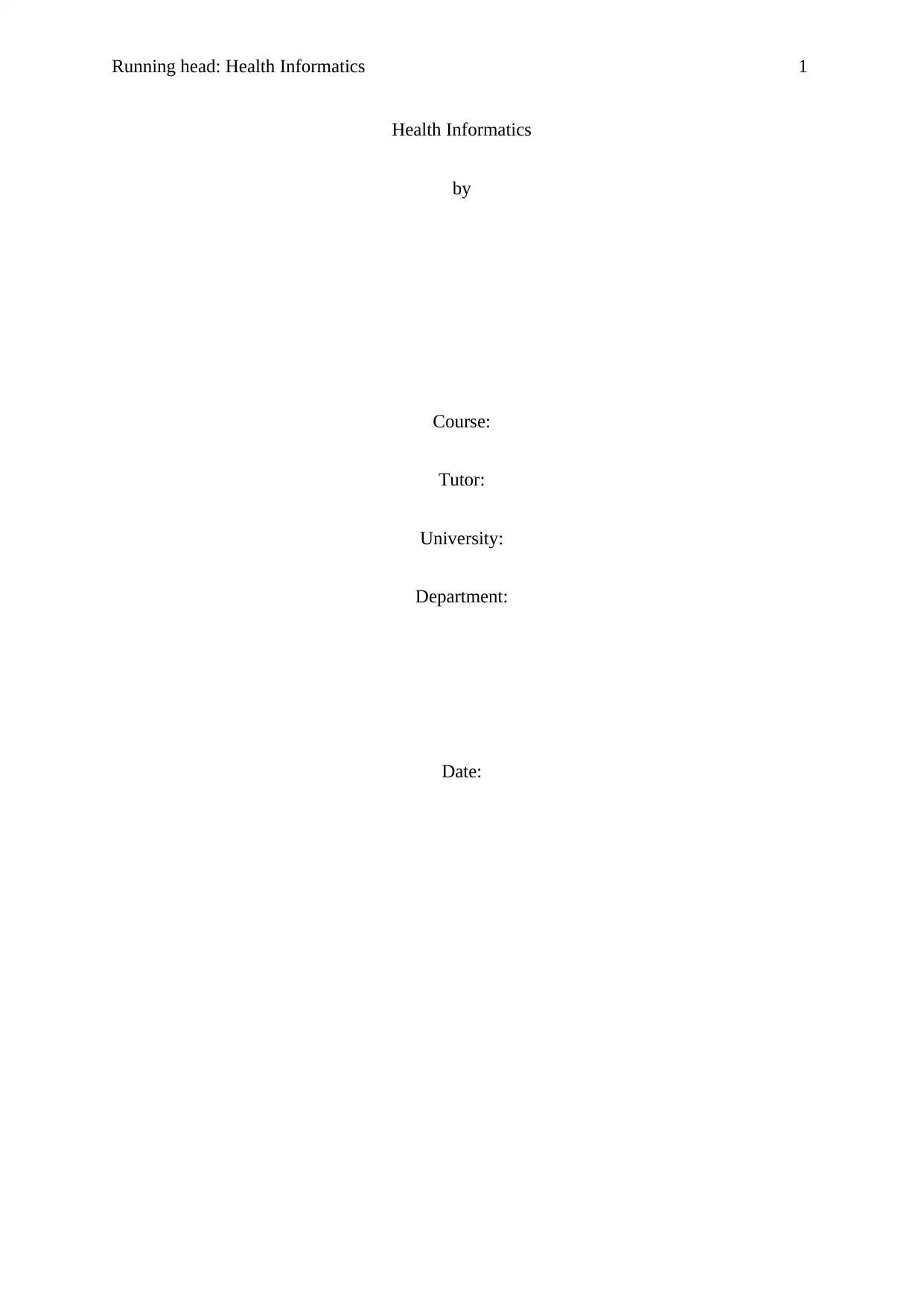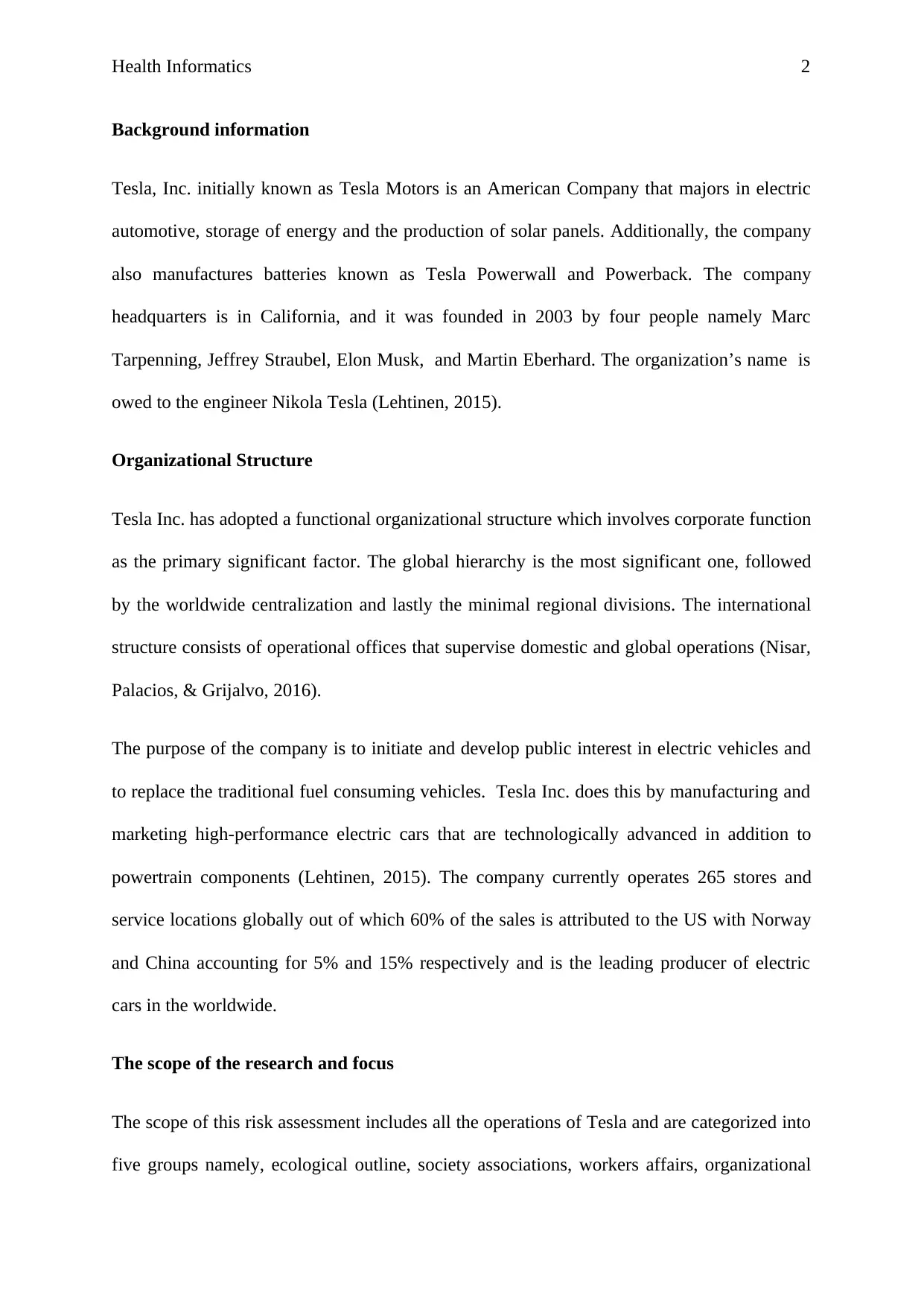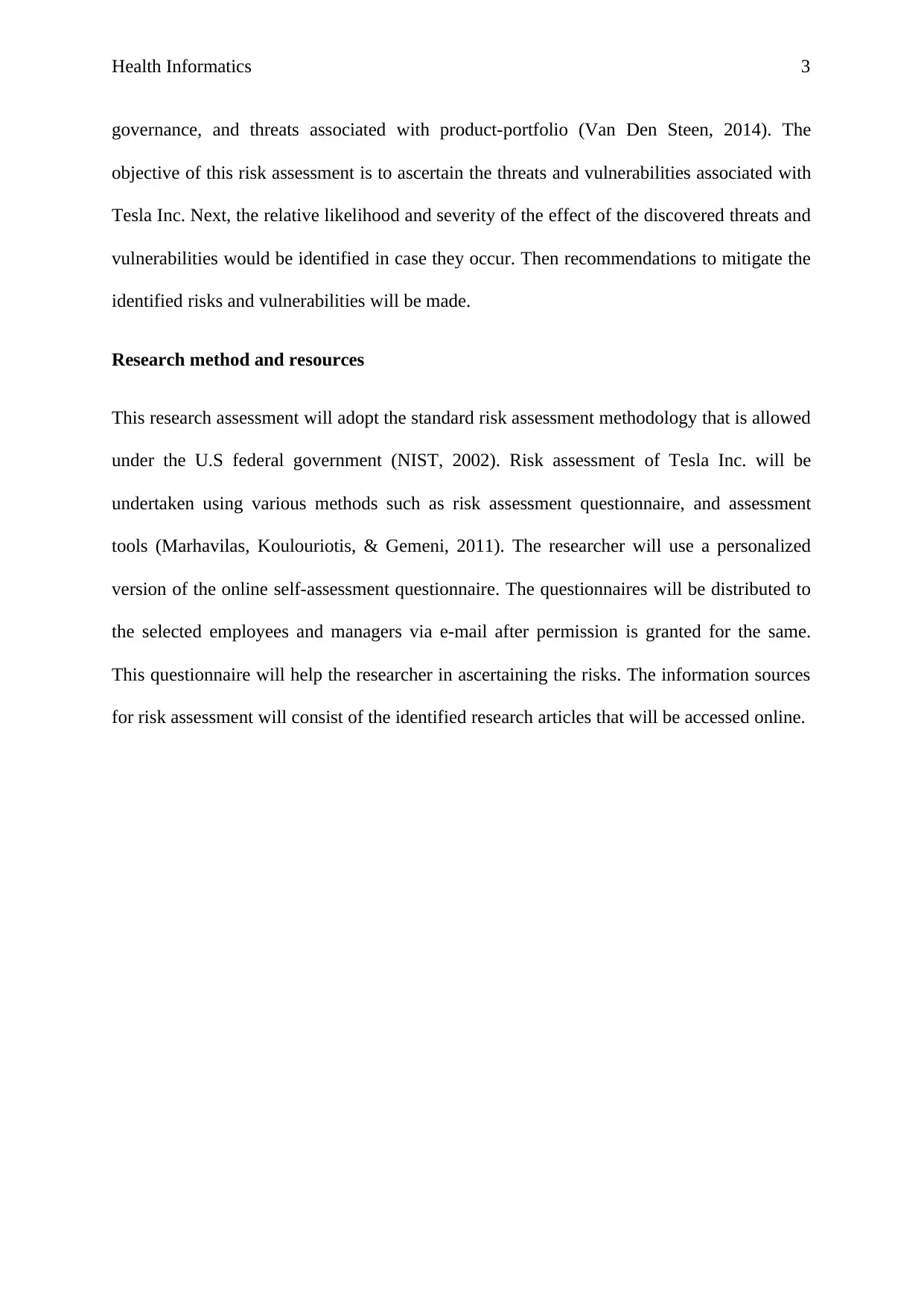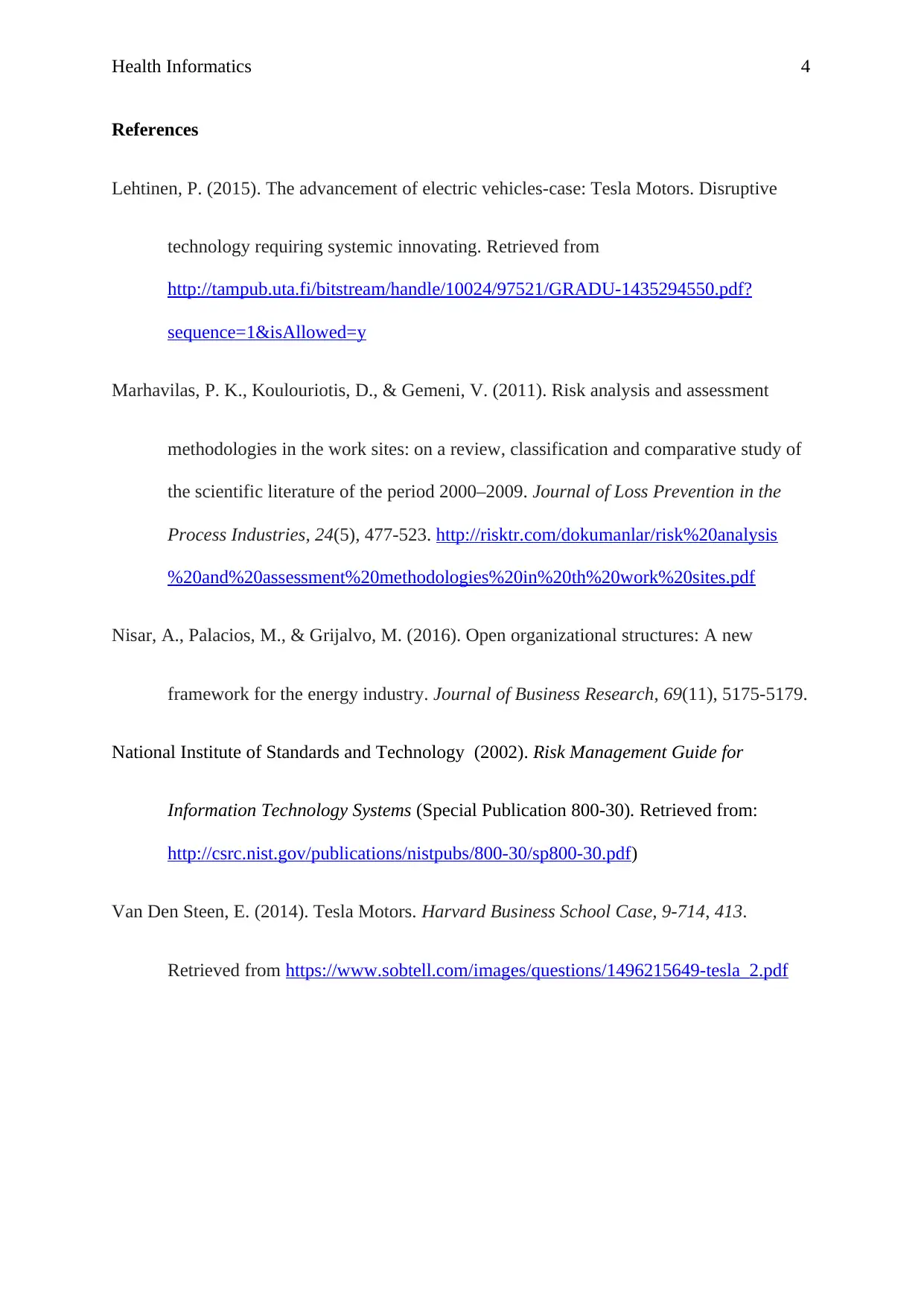University Health Informatics: Risk Assessment Report on Tesla Inc.
VerifiedAdded on 2021/04/21
|4
|711
|38
Report
AI Summary
This report provides a health informatics risk assessment of Tesla Inc., focusing on the company's organizational structure, operations, and potential vulnerabilities. The assessment categorizes risks into ecological, societal, worker, organizational governance, and product-portfolio threats. The report outlines the research methodology, which includes questionnaires and online resources, adhering to standard risk assessment practices. The objective is to identify threats, determine their likelihood and severity, and recommend mitigation strategies. The report highlights Tesla's functional organizational structure and its mission to promote electric vehicles. The scope encompasses all Tesla operations, aiming to identify and address potential risks to ensure sustainable growth and operational efficiency. References include research articles and government guidelines on risk assessment methodologies.
1 out of 4











![[object Object]](/_next/static/media/star-bottom.7253800d.svg)